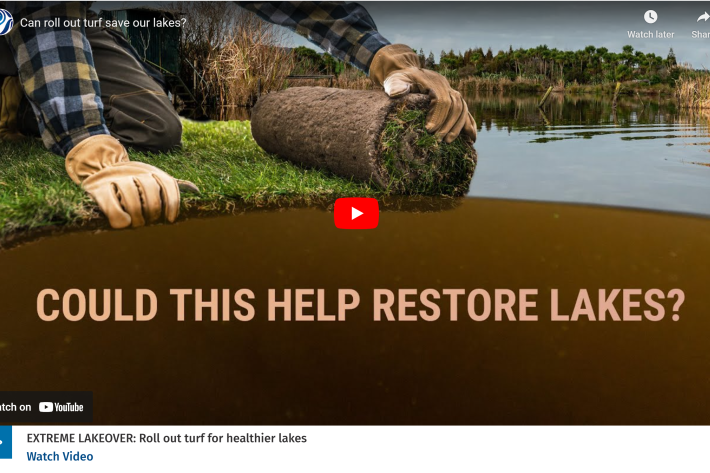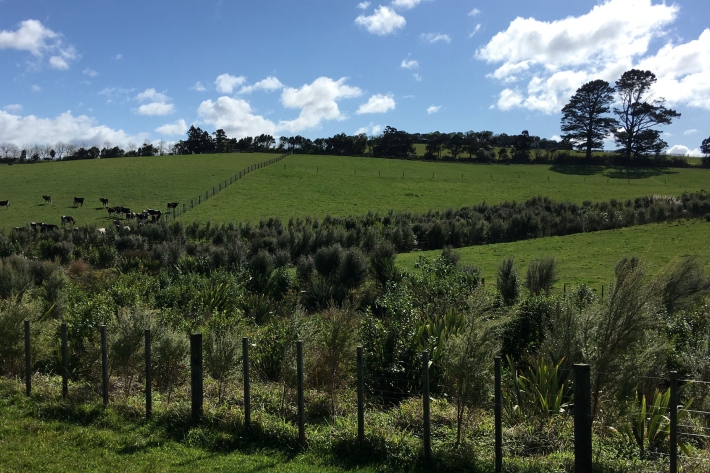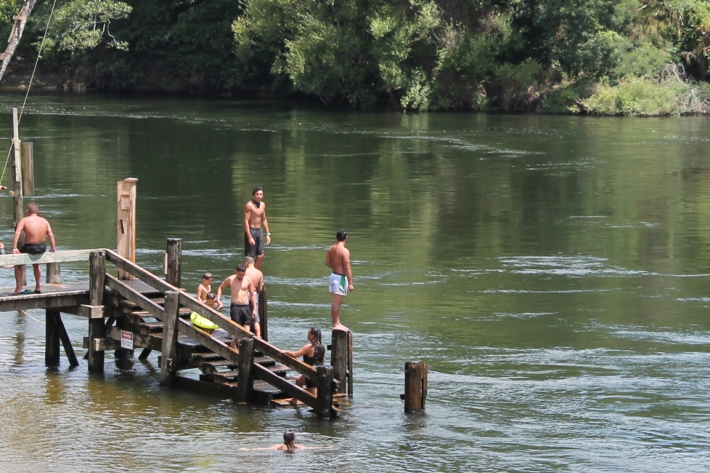-

Freshwater mitigation systems
Effective systems to manage contaminant losses -

Restoration of aquatic ecosystems
Research ProjectThis project aims to increase our knowledge of aquatic ecosystems and their restoration, and apply this to degraded streams, rivers, lakes and estuaries. -

Extreme Lakeover: NIWA’s Guide to Rolling Back Life into New Zealand Lake
Publication article26 March 2025A team of NIWA freshwater ecologists have completed their research on the use of biodegradable plant mats as life rafts to help reintroduce native aquatic plants to degraded freshwater lakes. -

NIWA Seeks Crucial Data to Boost Freshwater Protection Efforts
Publication article07 March 2025NIWA scientists are gathering data on freshwater mitigation across NZ to improve predictive models. -
RotoTurf: Aquatic plant ‘life rafts’ in degraded lakes
A team of NIWA freshwater ecologists are researching the use of biodegradable plant mats to help reintroduce native aquatic plants to degraded freshwater lakes in Aotearoa-New Zealand. -

High Frequency Water Quality Monitoring Guidance
Research ProjectA NIWA-led project to support anyone wishing to deploy a water quality sensor in rivers, lakes and estuaries. -

Urban Runoff Quality Information System (URQIS)
ServiceNIWA's Urban Runoff Quality Information System (URQIS) provides planners, engineers and researchers with information about the quality of stormwater from different locations and landuses and under different flow conditions. -

Putting algae to work
Feature story15 December 2022Can native freshwater algae help restore the mauri of local waterways? Lawrence Gullery investigates. -
Satellites reveal NZ’s coastal health
Media release21 September 2022For the first time, satellites have been used to track coastal water health around Aotearoa New Zealand. -
Demand grows for NIWA’s Riparian Management Training
Media release09 June 2022NIWA has updated and restarted a course using a riparian planning tool developed by one of its former chief scientists more than 20 years ago. -

Waikato Dynamic Models Project Proposal
Protection of the Awa Models enable us to predict how different uses of the land and water will impact river and stream health. -

Bottom lining for the control of submerged lake weeds
Bottom lining is the installation of a flexible covering over the top of beds of aquatic weeds, similar to using weed matting in home gardens. The lining is held in place by weights (e.g., rocks or sandbags) or by pinning. This control method is also called ‘benthic barriers’.


